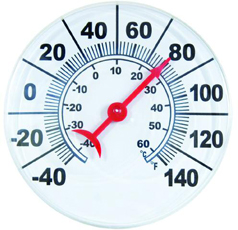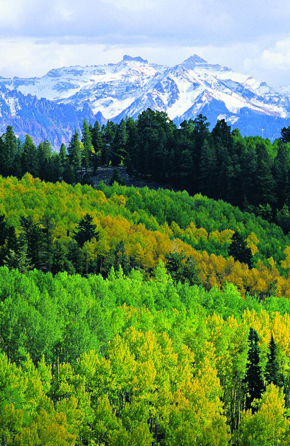CHANGES IN WEATHER
Thermometers: How They Work, Sunlight
 Umbrellas are useful in the rain.
Umbrellas are useful in the rain.
Should you grab an umbrella on your way out the door today? Do you need to wear a jacket? Weather conditions are always changing, and we make changes to adapt to the weather.
Weather refers to the state of the air outside. Sometimes it's cold and wet; sometimes it's warm and dry. A bright, sunny morning may be followed by a windy, cloudy afternoon.
Changes in weather are a result of the changing interactions of water, air, and temperature in our environment.
 A beautiful afternoon.
A beautiful afternoon.
 A thermometer.
A thermometer.
Temperature is a measurement of how hot or cold we will feel in our environment. When the temperature rises, we find ways to cool off. When the temperature drops, we add layers of clothing and find heated shelters.
Although the temperature can differ greatly from one area to another and from one season to another, our temperature on Earth remains stable enough for plants and animals to live.
Thermometers: How They Work
How does a thermometer work? A thermometer is used to measure temperature. The word thermometer is a combination of “thermo,” which means heat, and “meter,” which means to measure. The thermometers we commonly use are called bulb thermometers. They are usually filled with mercury, a mineral that is liquid at room temperature.
Like most liquids, mercury expands, or gets bigger, when heated. As the environment gets warmer, the expanding mercury inside the narrow glass tube of the thermometer has nowhere to go but up. When the temperature cools, the mercury slides back down the tube.
Watch the weather conditions in your area over the course of a week. Record the changes as they occur. Notice how often the weather is changing and be aware of the actions you take to adapt to the changing weather.
Sunlight
We all enjoy mild temperatures on a sunny day. However, we probably don't stop to think about just how important that sunlight is to the temperatures maintained on our planet.
 The sun is Earths energy source.
The sun is Earths energy source.
The sun is the principle source of energy for our Earth. Light and heat supplied by the sun are necessary to maintain temperatures that make our Earth inhabitable for people, plants, and animals.
 A cougar.
A cougar.
The sun heats the air, land, and water. Heat from the sun is absorbed by the land, and the land releases heat into the air above it, even at night. Large bodies of water also store and release heat, but at a much slower rate than the land.
Areas at high altitudes, like mountaintops, are always cooler than areas at lower altitudes. Air temperatures drop more than three degrees Fahrenheit (1.6° C) with each 1,000 feet (305 m) of altitude. That's why some mountains are covered with snow year-round!
 Snow is always on top of these mountains.
Snow is always on top of these mountains.
Whether you decide to take an umbrella with you or put on a jacket, you are finding ways to adapt to weather conditions that are continually changing.
 People who live in cold climates must adapt to shoveling snow.
People who live in cold climates must adapt to shoveling snow.
Additional topics
- WATER IN THE EARTH SYSTEM - The Water Cycle, Rain, snow, sleet, hail, Create Condensation, Fog, Clouds
- Other Free Encyclopedias